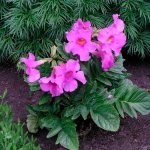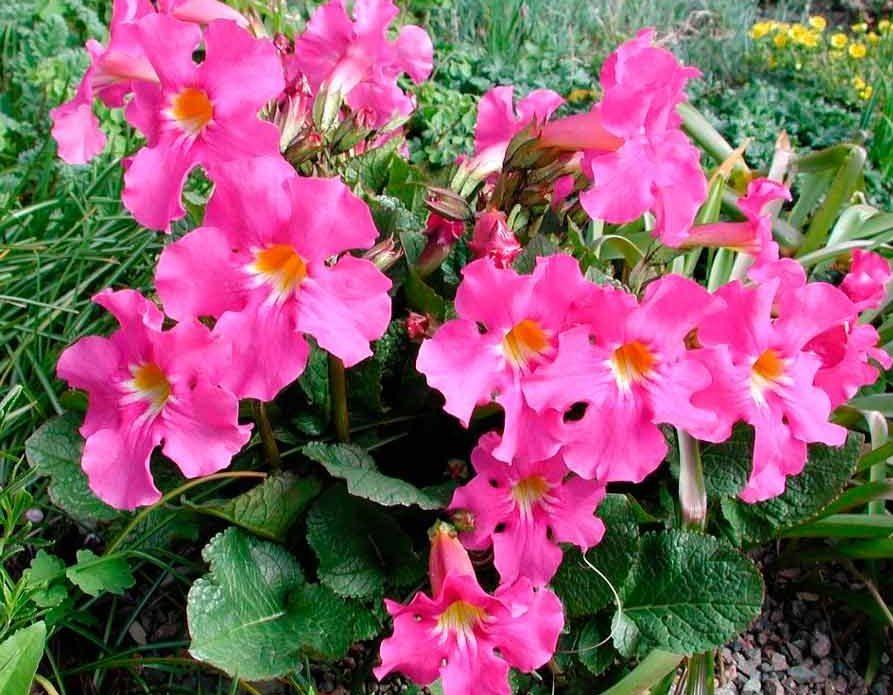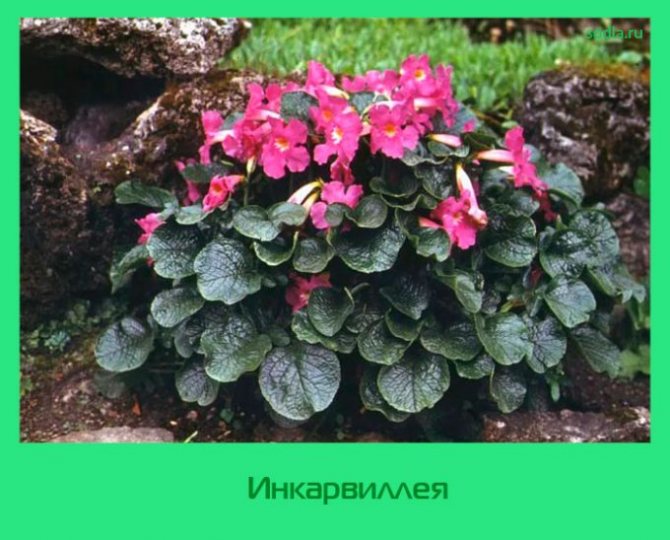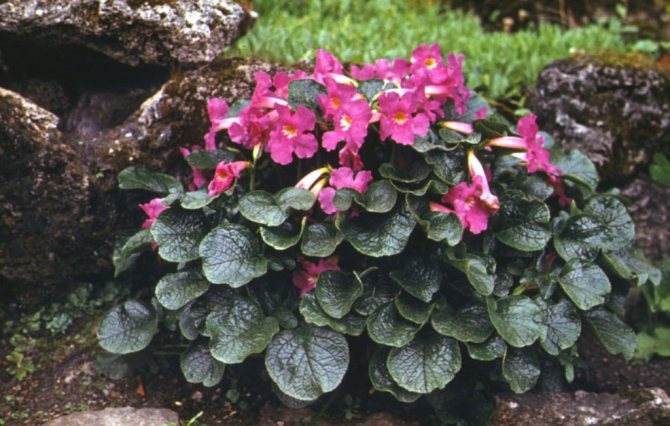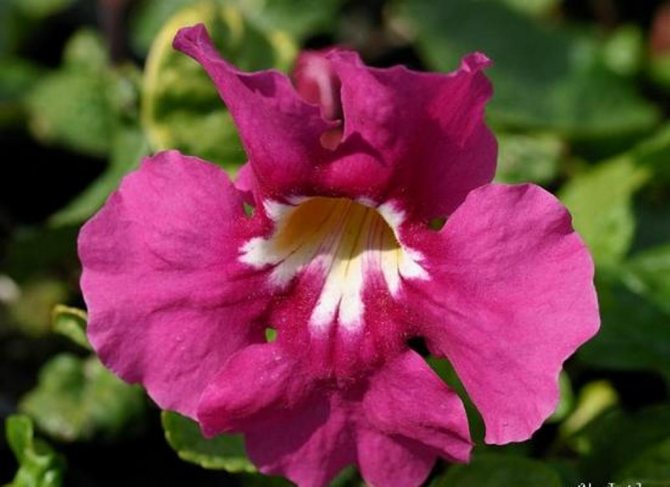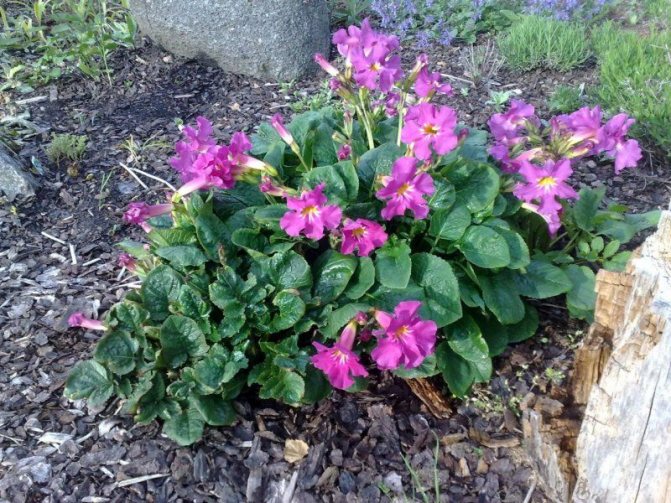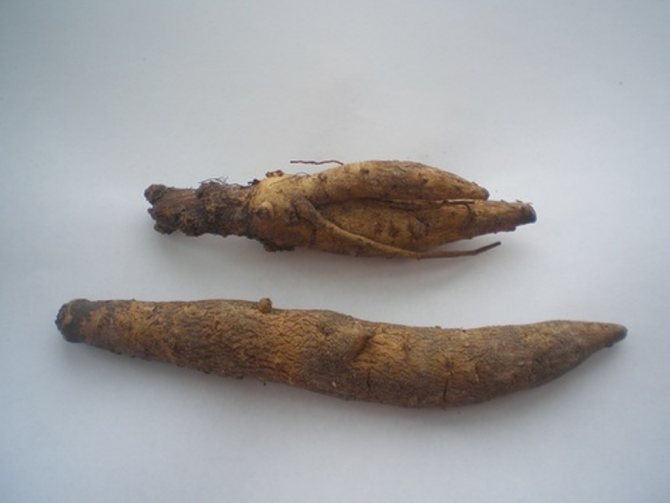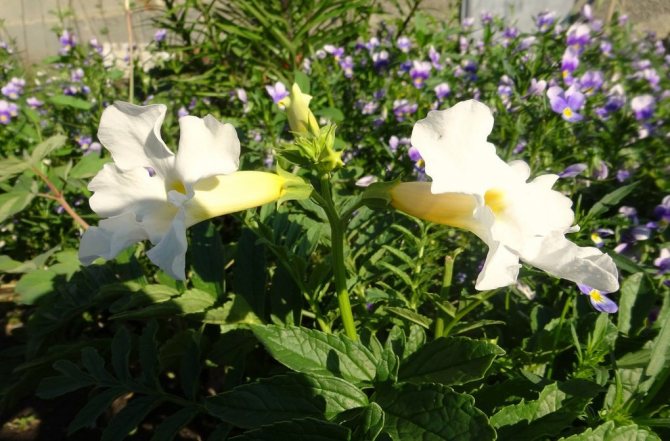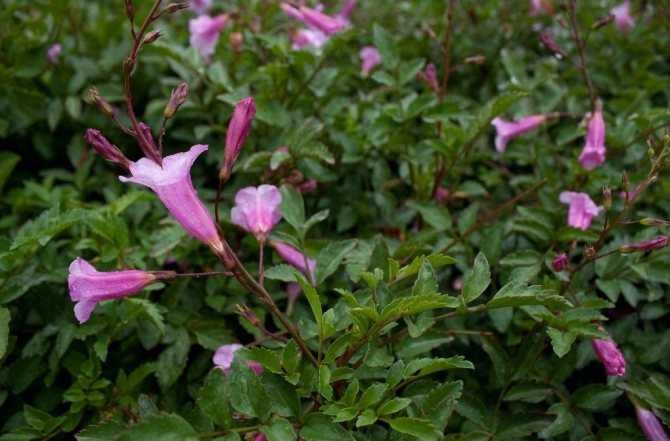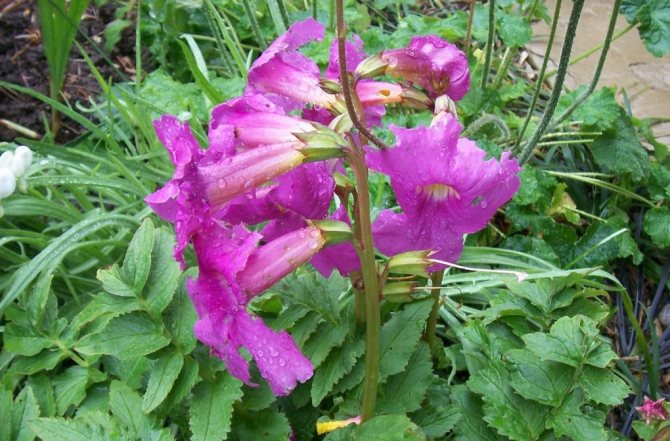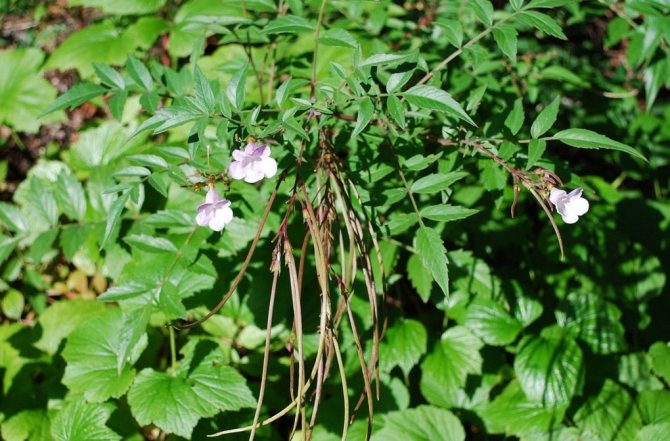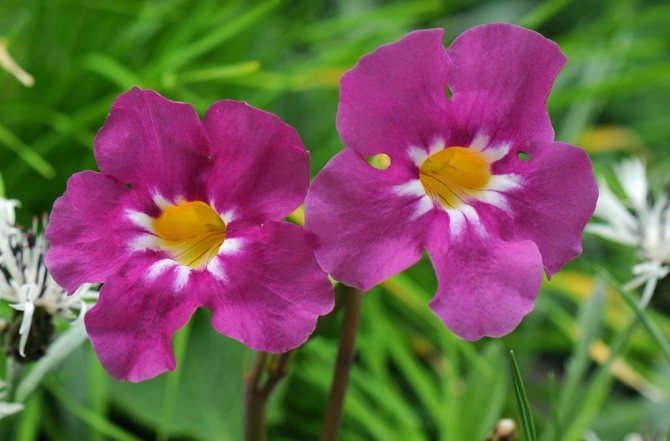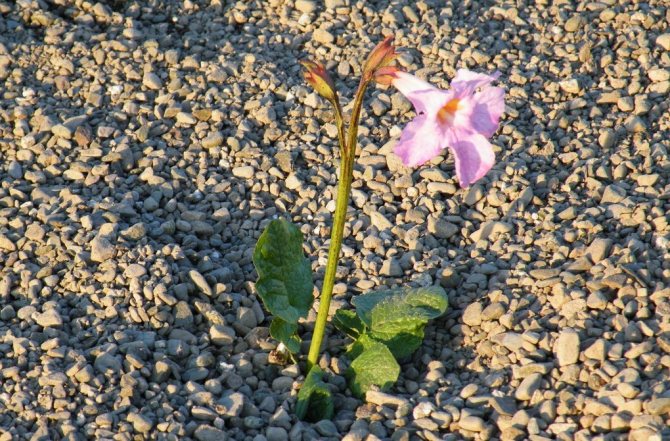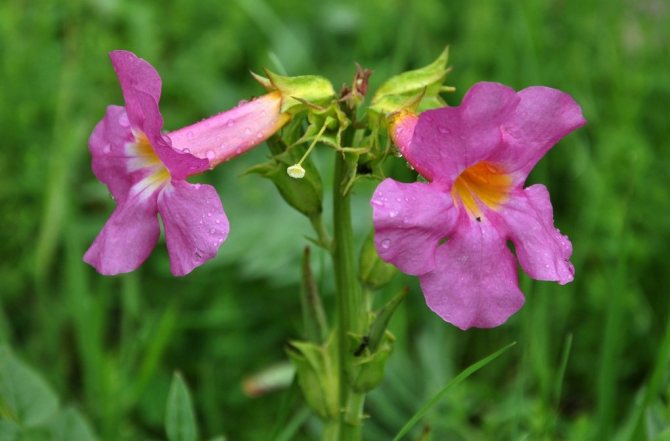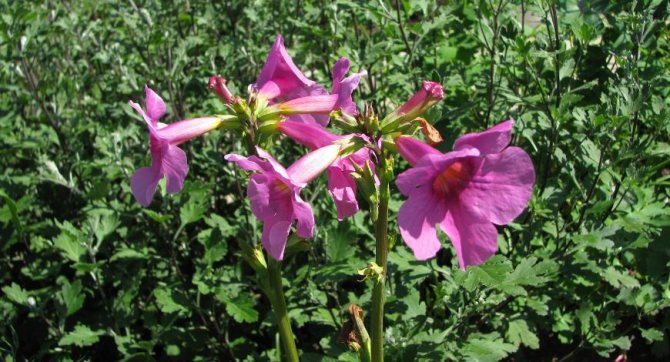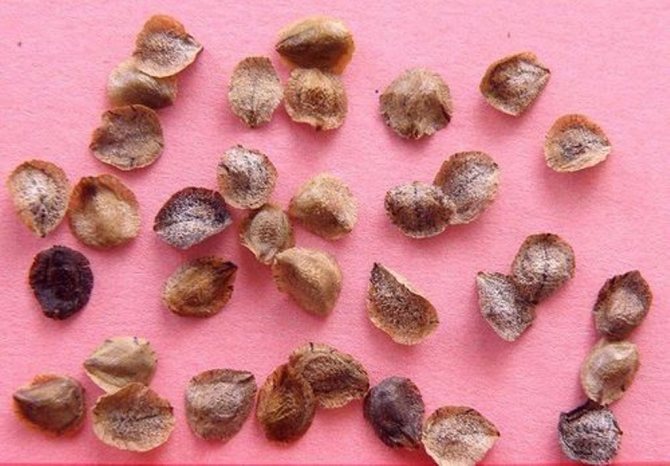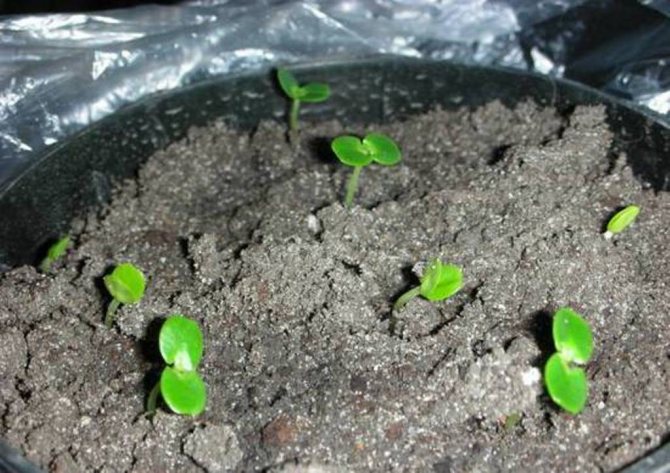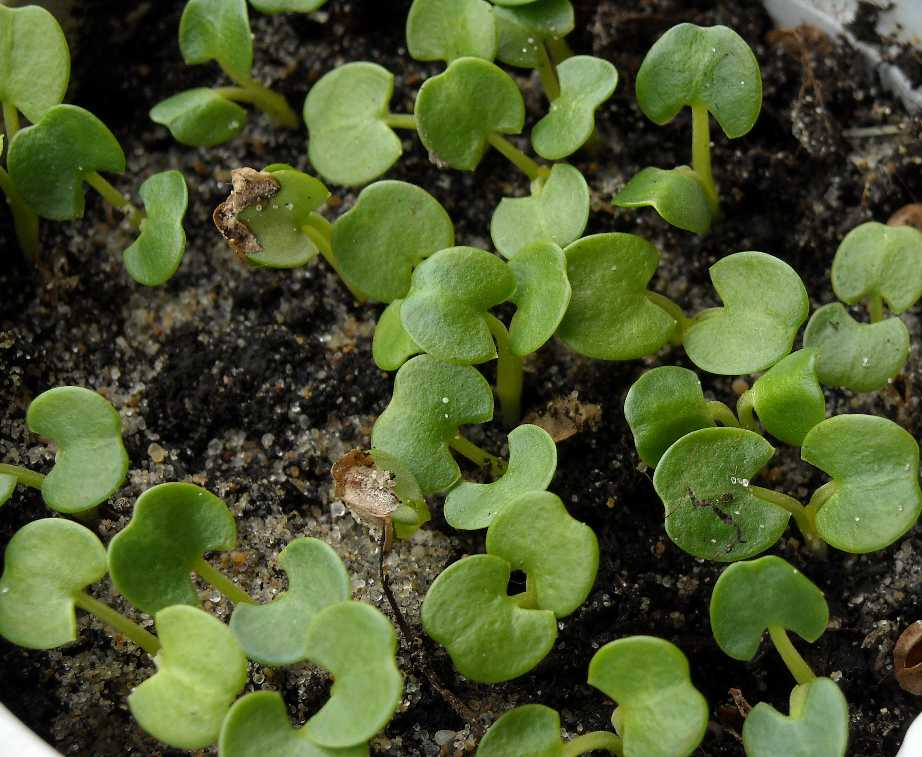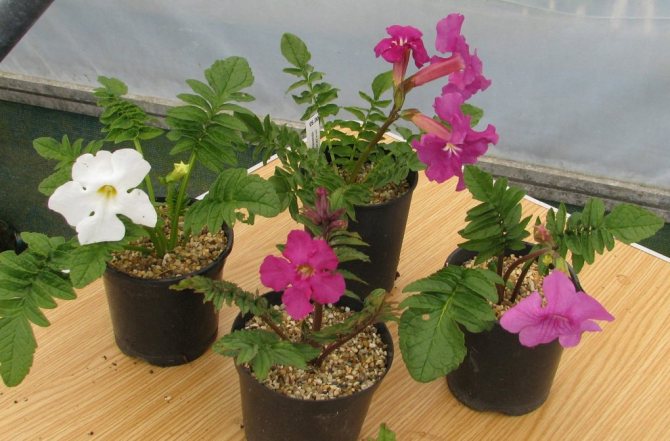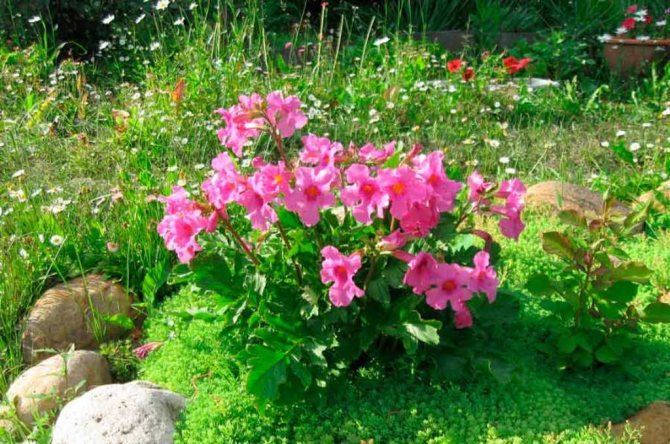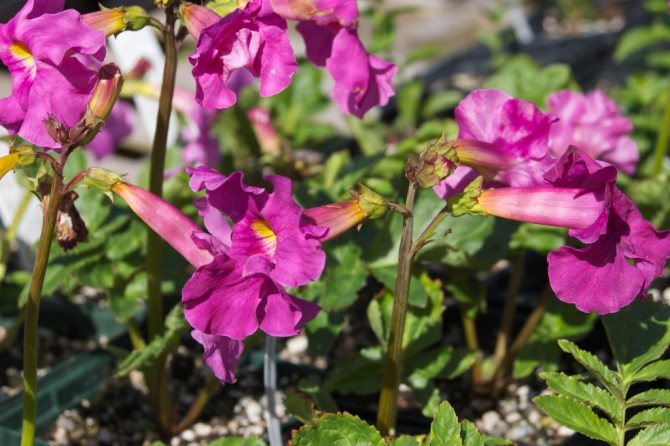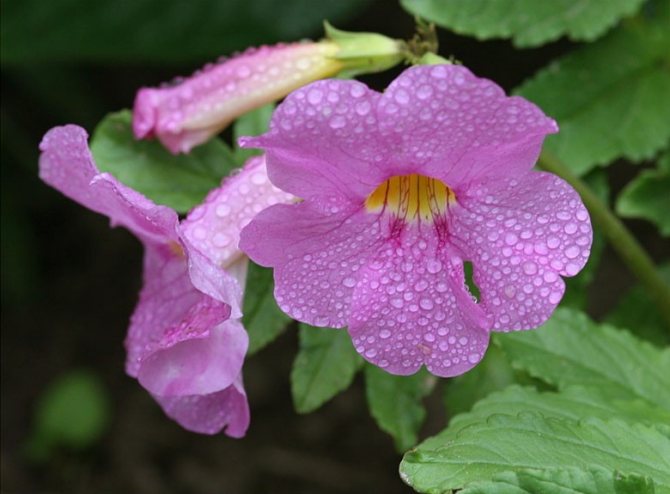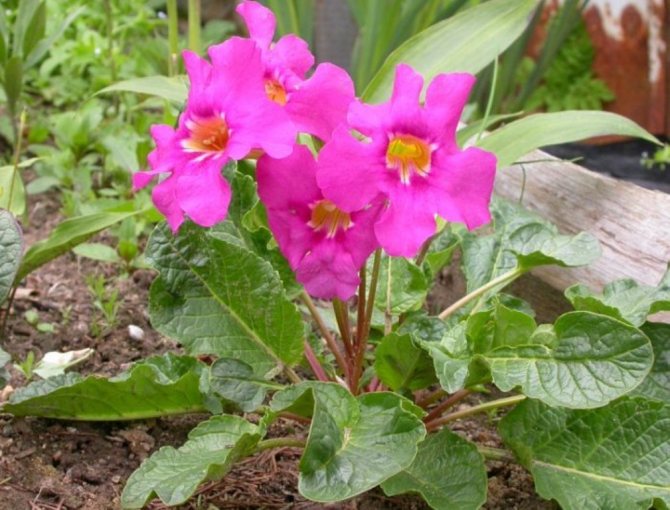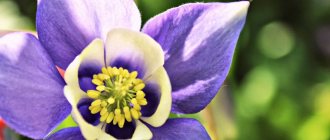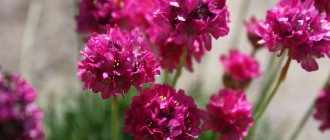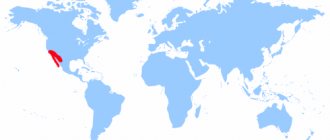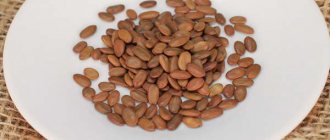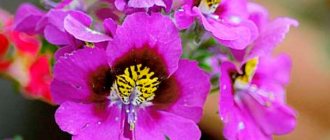Incarvillea flower description
Incarvillea can be an annual, biennial, or perennial herb that grows up to two meters in height. Tuberous roots, woody. Stems can be simple, erect or branched. The leaves are arranged on the stem in the next order, have an unpaired-finger-cut dissected shape, the edges are finely toothed. Inflorescences are racemose or paniculate. The flowers are five-part, the calyx is bell-shaped, the corolla is tubular. Flowers can be yellow, red or pink. The fruit is a polygonal bipartite capsule, winged seeds with pubescence.
Description of the plant
Incarvillea delavea belongs to the category of herbaceous plants, the height of which can reach 180-200 cm. Depending on the type of ornamental culture, there are annual, biennial or perennial plants.
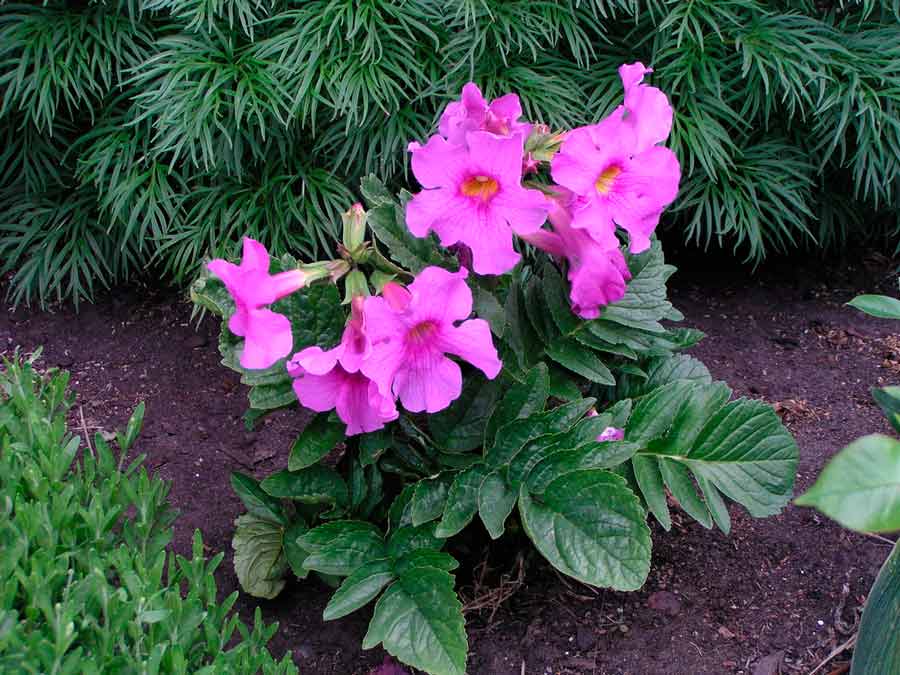
Incarvillea making
The root system can be woody or tuberous. Stems, according to the description, growing upward, are branched or simple. Leaf plates can be arranged alternately or collected in root rosettes.
A fine-toothed edge can be seen on the foliage. The flowers have tubular corollas and a bell-shaped calyx.
Incarvillea flowers, painted in red, yellow, pink shades, can be collected in inflorescences of both paniculate and racemose type. The fruits are bipartite polygonal capsules containing winged pubescent seeds.
Note! The Incarvillea delavea flower was named after the French missionary Pierre Nicholas D Incarville, who was able to amass a large collection of Incarvillea in China.
Planting incarvillea outdoors
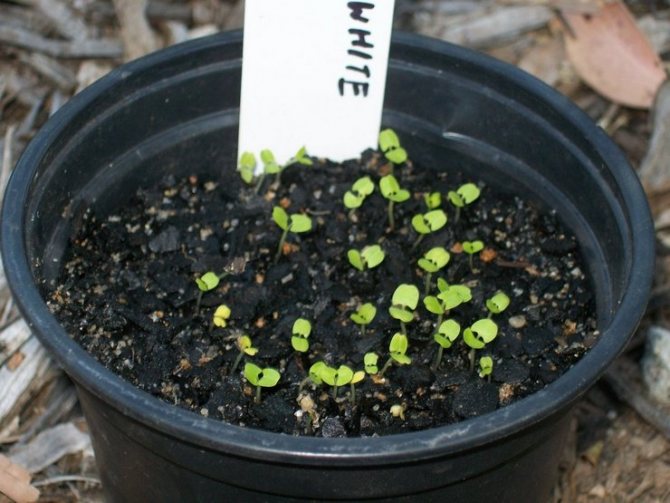

When to plant incarvillea
Planting and caring for Incarvillea outdoors is easy enough. It is best to grow seedlings first, and then transplant them into open ground. The best time to plant Incarvillea seedlings is March. The seeds are distinguished by good germination, therefore, for sure, there will be 100% germination.
For planting, you can use ordinary soil for seedlings, you need to bury the seeds in it only 1 cm.After planting the flower, sprinkle the soil with a small layer of calcined and cooled river sand and water it well. The temperature in the room where the seedlings are grown should be between 18-20 degrees. The first shoots will appear in 5-7 days. Incarvillea seedlings do not tolerate transplanting very well, so it is best to plant seeds immediately in peat pots. Such pots can be planted together with seedlings in the ground, they will be an excellent decoration.
Seeds of biennials and perennials can be planted directly in open ground from April to June. If the temperature outside is not lower than 15 degrees, then the first shoots will appear in 2 weeks. The only drawback of the seed method is that such a plant will bloom only in the second year after sowing.
How to plant incarvillea
Incarvillea is best planted on a hill, as it absolutely does not tolerate waterlogging and stagnant water. If the soil in the garden is heavy, then it is necessary during planting to make a good drainage layer of gravel or coarse sand.The place for planting should be such that the sun hits the plant in the first half of the day, and in the second the flower should be in the shade.
The soil for planting Incarvillea should be light and fertile. Sandy loam soil is perfect. Before planting, in each hole you need to pour a little wood ash and mineral fertilizer, which have a long action. It is possible to plant seedlings in holes together with peat and pots, this will enable it to take root better. The empty space should be filled with garden soil and after planting, water should be abundant.
Incarvillea: planting and care
Incarvillea belongs to unpretentious plants. Any soil is suitable for planting an ornamental culture. It is important to provide a drainage system in each hole to avoid stagnant water. For this purpose, you can use:
- coarse sand;
- fine gravel;
- expanded clay.
Feverfew maiden - growing from seeds
Experts recommend adjusting the mode of watering the Incarvillea flower in such a way that the soil does not have time to dry out.
Top dressing must be applied once every season. It is advisable to fertilize the soil in mid-May, when the green part of the plant enters the active growth phase. As a top dressing, a complex mineral fertilizer or mullein infusion is used. The dosage indicated by the manufacturer should not be exceeded, so as not to provoke a decrease in the frost resistance of the ornamental culture.
Note! Experienced growers recommend weeding the soil near the Incarvillea immediately after wetting.
Planting and caring for Incarvillea Delavea is not difficult, so even an inexperienced florist can take up growing plants.
Preparing for winter
The plant can overwinter in the ground. To prepare flowers for the winter period, it is necessary to mulch the land in which the culture is planted. As a mulch, you can use a layer of sawdust or spruce branches. The thickness of the layer should be within 7-10 cm. At the end of March, the mulch must be removed in order to avoid the occurrence of fungal diseases.
Important! In addition to mulch, young seedlings need additional cover with polyethylene material.
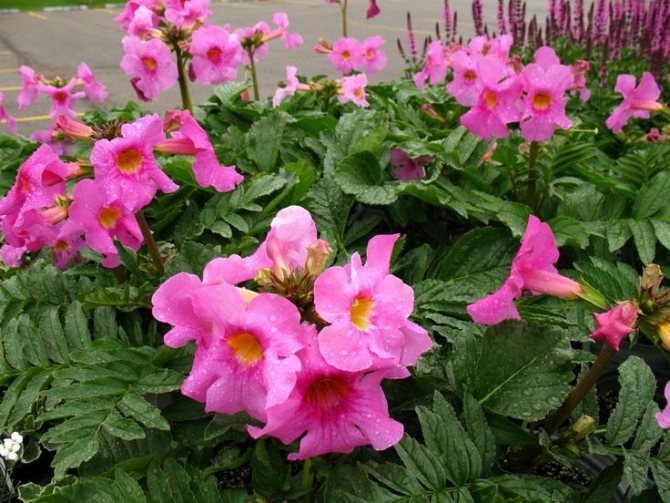

Gorgeous bloom
Caring for Incarvillea in the garden
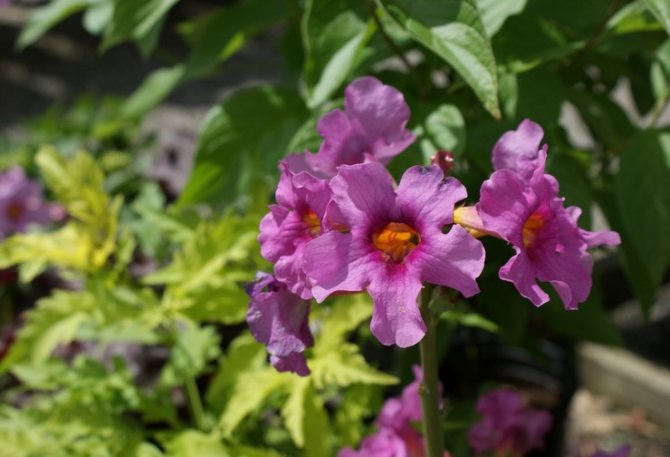

Watering
In order for the plant to grow healthy, strong and beautiful, it is necessary to water it regularly. After each watering, carefully loosen the soil, remove weeds and apply the necessary fertilizers. Watering the Incarvillea should be regular and moderate, the plant does not tolerate both drought and waterlogging of the soil. After each watering or rain, you need to carefully pour the soil so as not to damage the plant's root system. Simultaneously with loosening, it is necessary to remove weeds, if necessary.
Top dressing and fertilizers
Incarvilleas need only two feedings for the entire season. The first should be done at a time when the flower begins to actively grow, and the second - during the formation of buds. As an organic fertilizer, you can use a solution of mullein or bird droppings. In the second half of June, you do not need to apply any fertilizers, annual Incarvillea plants do not need this, and for perennial varieties such late feeding is even harmful, it reduces the winter hardiness of the plant.
When and how Incarvillea blooms
The buds begin to form at the end of May. Inflorescences are formed on long peduncles. The number of buds in a panicle or brush depends on the variety.
Types of flowers
All flowers in Incarvillea are divided into two groups: from five petals fused into a tube, or a tubular corolla with a wide, solid, curved edge. The color is usually monochromatic.
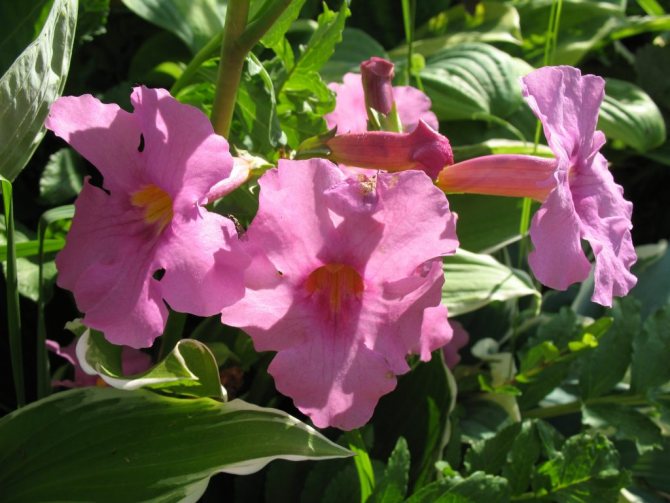

Five petals have grown together
Flower shapes
The size of the flower depends on the variety and ranges from 2-6.5 cm. It has a bracts, 4 stamens are hidden in the tube.Not all pollinators can get inside such a flower, but a pleasant light aroma lures them in large numbers.
For your information! The round holes-holes at the base of the flower tube are a trail left by large pollinators who could not otherwise get to the sweet nectar!
Flowering period
Different varieties may differ in the start date of flowering, but it lasts at least 6-8 weeks. The exact timing of flowering can be shifted due to weather.
Changes in care during flowering
When the buds begin to bloom, you should be especially careful about watering. Drying out of the roots leads to the rapid withering of flowers that did not even have time to bloom, and waterlogging leads to the appearance of rot.
Incarvillea in winter
Perennials need a mandatory shelter in the winter. You can cover Incarvillea with spruce paws, sawdust, compost and peat. The layer should be thick enough, at least 6 cm. When spring comes, the shelter must be removed so that the plant underneath does not come into contact. Young Incarvillea seedlings can be covered with a cut plastic bottle or glass jar.
If the winters are too harsh and snowless, then it is better not to risk it and dig up the tubers of the plant. Treat with Maxim, dry well and store in a cool room until spring.
Care
It is important to ensure that the Incarvillea is properly cared for after planting properly. It consists in regular watering and tillage, as well as in fertilizing the land. None of the varieties of this plant like too moist soil. Therefore, water your flower only when you see that the soil is dry. But also do not allow it to dry out, as the roots also dry out.
Do watering in the evening, when the sun is not very active, otherwise your plant will burn out. After watering the area, remember to loosen the soil and sprinkle it with a protective layer of cut grass. Do not use sawdust and tree bark as protection, as they increase the acidity of the earth, which negatively affects the roots and causes them to rot.
Popular: Bright flowering flower beds with ground cover arabis
Reproduction of incarvillea


In addition to the seed method, Incarvillea can be propagated vegetatively - by dividing the tubers and leaf cuttings. You need to divide the tubers either in March or in September. Garden gloxinia must be carefully dug out so as not to damage the roots. Then you need to carefully cut the plant into several parts so that each part has at least two living renewal buds. Places of cuts must be processed with charcoal powder. After dividing, the parts must be planted immediately in the prepared pits.
But propagation by leaf cuttings should be carried out in the summer - in June or July. To do this, the leaf of the plant must be cut off at the very root and the cut must be treated with Kornevin or any other root-forming agent. After that, the leaf must be planted in soil, which consists of equal parts of peat and sand and covered with a cut plastic bottle, thereby creating greenhouse conditions. First, the plant will have roots, then a rosette of leaves, and a year later, beautiful flowers.
Reproduction
Garden gloxinia readily propagates by seeds, cuttings and dividing the bush require some skill, therefore they are suitable for more experienced gardeners. Moreover, by seed reproduction, you can create your own varieties with a unique color.
Seeds for future planting are harvested in advance, slightly unripe, in order to prevent their loss and self-seeding. After drying, they are stored in an airtight bag until early March. Cold stratification is carried out for 2-3 weeks before sowing. Sow in a large shallow box on a fertile neutral substrate, which is pre-moistened. The seeds are deepened by 5-10 mm and carefully crushed with earth.


Not very friendly shoots appear by the end of the first week after sowing, if the temperature in the room is +18 .. + 20 ° С. With a decrease of only 5 degrees, the seeds will sprout a week later. With the appearance of two true leaves, the plant dives into separate pots. In early July, the matured seedlings are sent to the garden to a permanent place. The distance between them should be at least 30 cm. In warm regions, crops can be sown directly into open ground. They do this from the end of April to June.
For vegetative propagation in June, a stem with a small root area is separated from the main plant. To make the root system better formed, the petiole is placed in a stimulating solution (root or heteroauxin). The shoot is dripped in a pot and covered with a jar to avoid drying out the soil. After 15-20 days, the first independent roots appear. But this year, all the forces of the plant are directed to the development of the tuber. A beautiful leaf rosette and flowers are formed from the second year.
Diseases and pests
Very often, Incarvillea suffers from root rot. This happens due to the fact that improper watering is carried out and moisture stagnates in the soil. If you do not notice it in time, then the plant will already be difficult to cure, it will most likely die. At the first signs of root decay, it is necessary to carefully treat the plant with a solution of any fungicide. You also need to eliminate errors in watering the flower, if this is not done, the problem will come back again and again.
As for pests, spider mites and mealybugs can infect Incarvillea. These pests suck the juice from the plant, because of this, it gradually withers and turns yellow, and then dies altogether. You can get rid of these pests with the help of such means as Actellik, Aktara and other similar means.
Mr. Dachnik warns: pests and diseases of Incarvillea
During the cultivation of Incarvillea, it can be attacked by such pests and diseases:
| Problem | Manifestation | Elimination |
| Rotting of the root system. | Withering and death of the plant. | They are treated with solutions of the fungicides Fundazol or Skora. Correct the irrigation regime, reducing the frequency of water application. |
| Spider mite. | Deformation of flowers and stems. White thin web. | Sprayed with Aktara and Aktellik. |
| Mealybug. | Withering leaves. An accumulation of white small insects. | They are treated with Actellik and Aktara acaricidal agents. |
With the timely disposal of these insects and diseases, the plant will delight with its healthy and blooming appearance.
Types and varieties of incarvillea
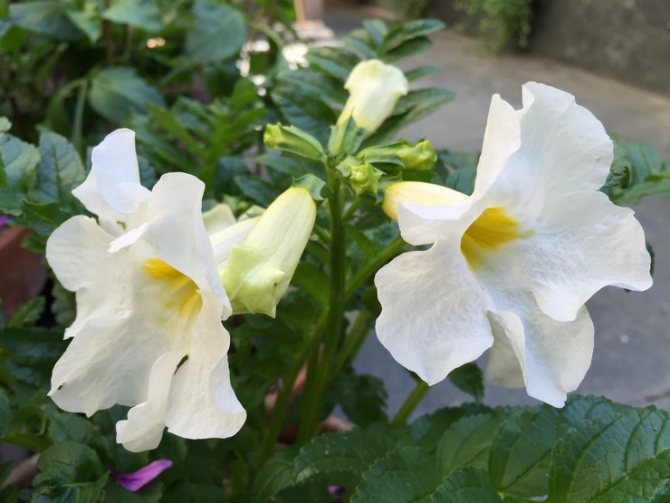

Only a few species and varieties of Incarvileia are grown in culture.
Incarvillea mairei (Incarvillea mairei = Incarvillea grandiflora = Tecoma mairei)
Leaves are basal, lyre-shaped, slightly feathery dissected, have rounded lobes and grow up to 30 cm in length. The flowers are located on long petioles, of a dark purple-red hue, there are white spots on the yellow throat. Flowering begins in early summer. The plant is quite winter hardy.
Incarvillea compacta
Herbaceous perennial. Stems grow up to 30 cm in height, smooth or slightly pubescent. Leaves are pinnate, basal have whole heart-oval lobes. Flowers up to 6 cm in diameter, purple, yellow throat. Flowering of this species lasts from three weeks to one month. Plants of this species do not need shelter for the winter.
There is another variety that grows up to 80 cm. Leaves are basal, pinnately-divided. The flowers are purple-pink, up to 7 cm in diameter. The flowers of some varieties of this species are pink, white or salmon pink.
Olga's Incarvillea (Incarvillea olgae)
Perennial, grows up to 1.5 m in height. Stems glabrous, branched in the upper part. Leaves are opposite, pinnately dissected, whole to the top. Flowers up to 2 cm in diameter, collected in loose inflorescences and have a reddish-pink tint.Flowering begins in mid-summer and lasts almost 2 months. Winter hardiness in this species is low, so the plant can winter only under a very good shelter.
Chinese Incarvillea (Incarvillea sinensis)
It can be both an annual and a perennial. Grows up to 30 cm in height. The leaves are feathery. The flowers are creamy yellow. This species is distinguished by the duration of flowering, since new buds are constantly forming on the plants.
Incarvillea delavayi
Herbaceous perennial plant. Grows up to 1.2 m in height. Leaves are basal, pinnatipartite. Flowers up to 6 cm in diameter, pink-lilac shade, yellow throat. Flowering begins in June and lasts about 1 month. This species is not frost-resistant, therefore it needs good shelter for the winter. There are varieties with purple and snow-white flowers.
The healing properties of Incarvillea
Drummond phlox: growing from seed, when to plant
In Chinese traditional medicine, only the species Incarvillea Sinensis is used. From the aerial part, infusions are made, which are used externally in the treatment of rheumatism, as well as for rinsing the mouth and larynx for various inflammatory diseases (angina, pharyngitis, etc.).
Briefly about history
The genus of Incarville got its name thanks to A.L. de Jussieu, who invented it from the surname of P.N.D'Incarville (a famous botanist). It was D'Incarville who brought the seeds of the plant from his trip to China in 1728.
Landing rules
Self-collected seeds of Incarvillea must be subjected to preliminary stratification by placing the seed material in an airtight package and keeping it in the refrigerator throughout the winter. Sowing is carried out in March. The seeds need to be sown in seedling boxes and installed in the greenhouse. You can also do direct sowing of seeds in open ground in the last decade of April. The sowing depth is about one centimeter.
When growing Incarvillea in greenhouse conditions, mass shoots appear in a week. The seedling method of growing involves diving seedlings at the stage of the appearance of the first true leaf. It is necessary to plant ready-made seedlings of an ornamental culture in the ground with a deepening to the cotyledons, after the threat of planting damage by recurrent spring frosts has passed. It is important to remember that the survival rates of Incarvillea seedlings are very low, therefore, in the conditions of home gardening, preference is given to direct sowing in open ground.
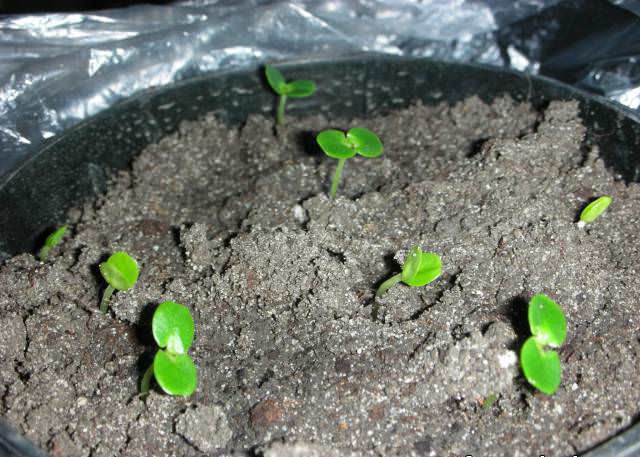

Views
Incarvillea grandiflorum
The growth of the bush is about 30 cm. Large pink flowers with a yellow center. This species stands out for its frost resistance. It winters well even without shelter.


Incarvillea Delaway
It grows up to 60 cm. The flowers are medium-sized pink in color, but the shades can be from light to dark. In winter, the plant must be covered.


Incarvillea dense
It has whole-lobed leaves and purple flowers. Stem height 30-35 cm.


Incarvillea Myra
The height of the bush is 30 cm. The flowers are large pink shades. The leaves are dissected. In the shelter, it will endure the winter well.


Incarvillea plant in garden design
Just a few years ago, Incarvillea was not very often grown in the garden, but later gardeners have appreciated the benefits of these flowers.
The fact is that it will not be difficult to grow gloxinia, and the flower itself looks great in both single and group compositions. In addition, in the natural environment, the culture grows in rather difficult conditions, therefore it easily adapts to any climate and soil. When properly cared for, a plant will reward its owner with lush and long-lasting flowering (Figure 1).


Figure 1. Garden gloxinia is often used to create flower arrangements
In landscape design, Incarvillea is often used to decorate rocky gardens, rock gardens, flower beds and other compositions that emphasize bright colors. In addition, the flower is suitable for creating flower alleys and borders along garden paths, and given its unpretentiousness, gloxinia can be planted anywhere.
Breeding features
Incarvillea is propagated by seeds, cuttings or dividing rhizomes. The seed method of plant propagation has been described above.
Cuttings
The grafting procedure is as follows:
- From the rosette of the leaves, cut one large leaf together with the stem.
- Place the stalk with one end in the solution for rapid root formation.
- Plant the cuttings outdoors after 24 hours. After three weeks, it will take root.
- The next year, a rosette of leaves will form, and the first flower stalks will appear.
- After a while, tuberous roots are formed, which can be further used for reproduction.

